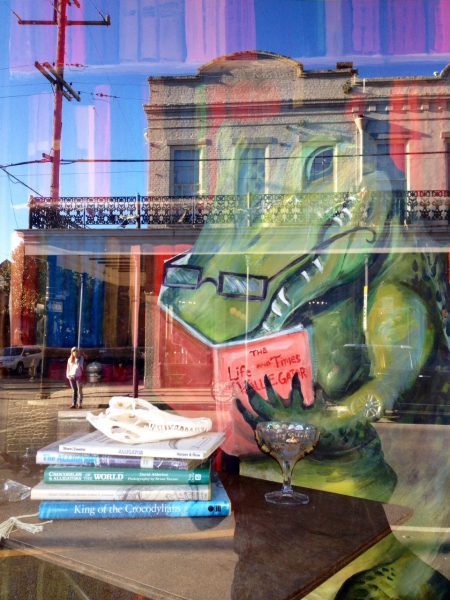“Grains and Names” captured a broad picture of a marriage and seemed to cover a lot of time, but does so through very short fragmented scenes. Do you often write in this style?
I write in numerous genres but I consider myself a poet first and foremost. As such, I am constantly mindful of space and time. With poetry you must be careful of every word choice and movement. One of my downfalls is that I often seek to cover too much material in too small of a space. I have been working lately on redaction and tightening my lens. However, flash gives me a little more leeway to experiment with larger jumps and movements within the work.
This story looks at several different ideas of burial, from the head under the sand, to the ants, to the narrator hiding rice in her pocket and finally the act of hiding an image of the family tree in their food. It moves from the idea of suffocation to something almost comforting and safe. Can you talk about that aspect of the story and the process of working with that theme as you wrote the piece?
I think the idea of secrecy was at the foremost of my process for this piece. The narrator is constantly covering things up, from her marriage to her own name to, eventually, her family’s heritage. It’s almost prophetic for her children as parents frequently pass along the habits they least desire. What really interested me while writing this piece was dealing with the different grains. There are both grains of sand and grains of rice, and I was intrigued with how to tie these in with the external tension of the narrator’s marriage and the internal conflict of her own identity. Each segment of the story has elements that draw from the previous section. The first bit talks of the Painted Canyon and sand art which moves to layering Steve in sand, to their wedding sand, to the children’s play sand, to the children at the fair. No matter how great of a leap it is from section to section, the reader can still follow along and connect the elements. I believe the movement from suffocation to comfort mirrors the struggles we often find in families. No relationship is free from tension and drama, but ultimately, if the relationship is to survive, we work through the suffocating moments and arrive at the comfort of our day-to-day activities.
Identity is another theme at play here. Though it’s called “Grains and Names” we don’t learn the narrator’s name—the only name we know is her husband’s. Was that always how you envisioned this for the story?
Yes, I never wanted the narrator to reveal her name. Names are powerful things, and I don’t believe the narrator fully knows or understands her name. As you mentioned there are several elements of burial in the flash. However, the flash ends with consumption of her name and the family tree. So while in the end she does not fully understand the element of her name, there is acceptance and a sort of resolve of who she is and of her life. I don’t believe the end is a happy one, but there is a sort of contentment or peace that happens.
You are the poetry editor for PoemMemoirStory and are also on staff at the Birmingham Poetry Review. How does your work as a poetry editor affect your fiction writing?
I gladly write in all genres, but feel that my poetry strengthens and improves my prose. My work as a poetry editor has a huge impact on my writing. It is through editing other people’s work and wading through the slush pile that I become a better writer and self-editor. I work under two very experienced senior editors and through their mentoring and instruction they have groomed my habits and abilities. Also, through working closely with PMS and BPR I have developed a feel for where to send my work for publication and how to best format my submissions. There’s a culture for submitting to literary journals and if you don’t follow the norms you severely limit your chances of acceptance.
What books or authors have had the most impact or influence on you as a writer?
I feel like that’s always a loaded question and have difficulty narrowing down a list. I am a complete sucker for children’s books. Eric Carle and Dr. Seuss have always been major influences. Then I love the usuals such as Hemmingway, Fitzgerald, Frost, Longfellow. Recently I finished Charles Frazier’s Cold Mountain, and it was a true pleasure. As far as poetry, the top three I currently have my nose in are: The Coal Life by Adam Vines, After the Revival by Carrie Jerrell, and Its Day Being Gone by Rose McLarney.



 The core workshop of SmokeLong Fitness is all in writing, so you can take part from anywhere at anytime. We are excited about creating a supportive, consistent and structured environment for flash writers to work on their craft in a community. We are thrilled and proud to say that our workshop participants have won, placed, or been listed in every major flash competition. Community works.
The core workshop of SmokeLong Fitness is all in writing, so you can take part from anywhere at anytime. We are excited about creating a supportive, consistent and structured environment for flash writers to work on their craft in a community. We are thrilled and proud to say that our workshop participants have won, placed, or been listed in every major flash competition. Community works.